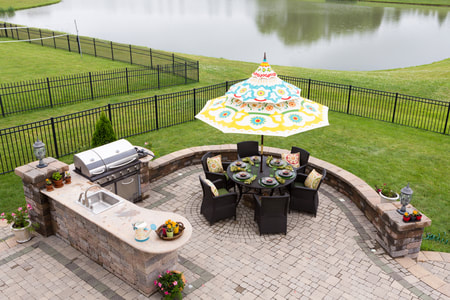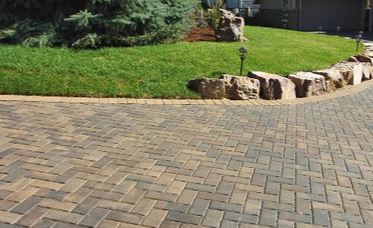Paving Contractor Nampa Idaho
|
Pavement is used to create a covering such as a walkway and/or driveway that can be used for many years. There are a plethora of options when it comes to pavement solutions such as asphalt, concrete, gravel, crushed rocks, pavers, designer rocks, and even wood. Landscaping and hardscaping designers will actually incorporate paving designs to help give that extra pop and/or support to a home and/or office design.
Paving has been around for a long time, going all the way back to the Romanic period. To add flair and character to their walkways and buildings, they would lay pavers out in mosaic patterns. Today, it’s a little easier for us to do this as the pavers are manufactured in a warehouse. Manufacturers are able to use molds to create unique designs, add special dyes, and even use certain textures to create one-off, unique designs that are beautiful and timeless. Paving is a very common method to create driveways, walkways, patios, and even roadways. One very common paver is an interlocking paver. Remember when we talked about the Romans using pavers? This is most likely what they used to create their roadways, walkways, and flooring. In fact, interlocking pavers have started replacing brick and concrete as a preferred paving option. To use interlocking pavers, you don’t set them in concrete; instead, you use sand which gives them flexibility for weather (hot and cold) and other outside factors such as cars driving over them. Another common paver option is stone pavers. These are used heavily in landscaping and hardscaping designs. They are extremely strong and last for a long time. Stone pavers can be made from any type of stone including Basalt, Limestone, Granite, and even Travertine. The Three Stages To A Properly Paved Surface:
Asphalt and/or Concrete Removal The first step is to make sure that any old material has been completely removed. To do this, it may require some serious work. In most cases, you’ll need heavy equipment to break up and carry away the older material. Sub-Base Preparation Next, you’ll need to make sure that there’s a good foundation to work with. If the old foundation is insufficient, it will need to be removed too. After that, the land will need to be graded and pitched in order to protect the new installation from water runoff and/or erosion. After everything has been graded, it will need to be compacted using more heavy equipment to make sure it’s settled. Paving And finally, the new pavement will be installed over the compacted sub-base/foundation. Depending on your pavement choice, you contractor will lay out everything and then will apply a sealant (if required) and/or fill the gaps with special materials designed to keep everything in place. |
|






